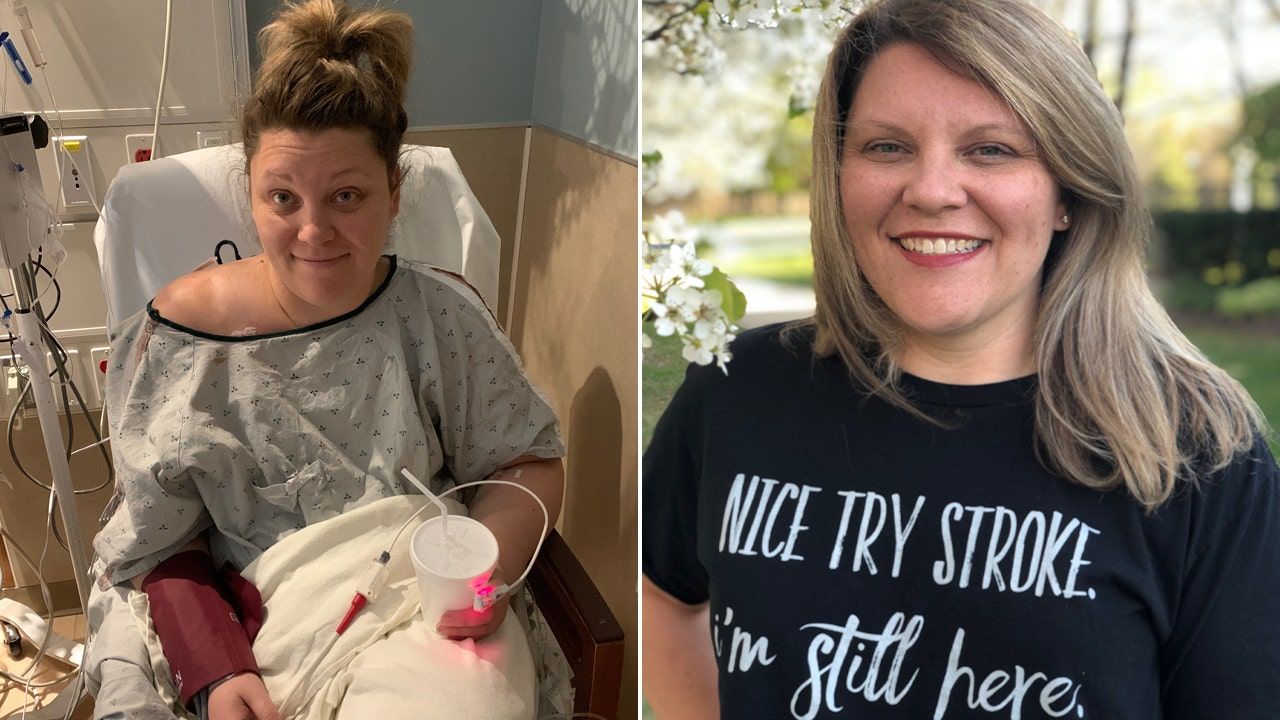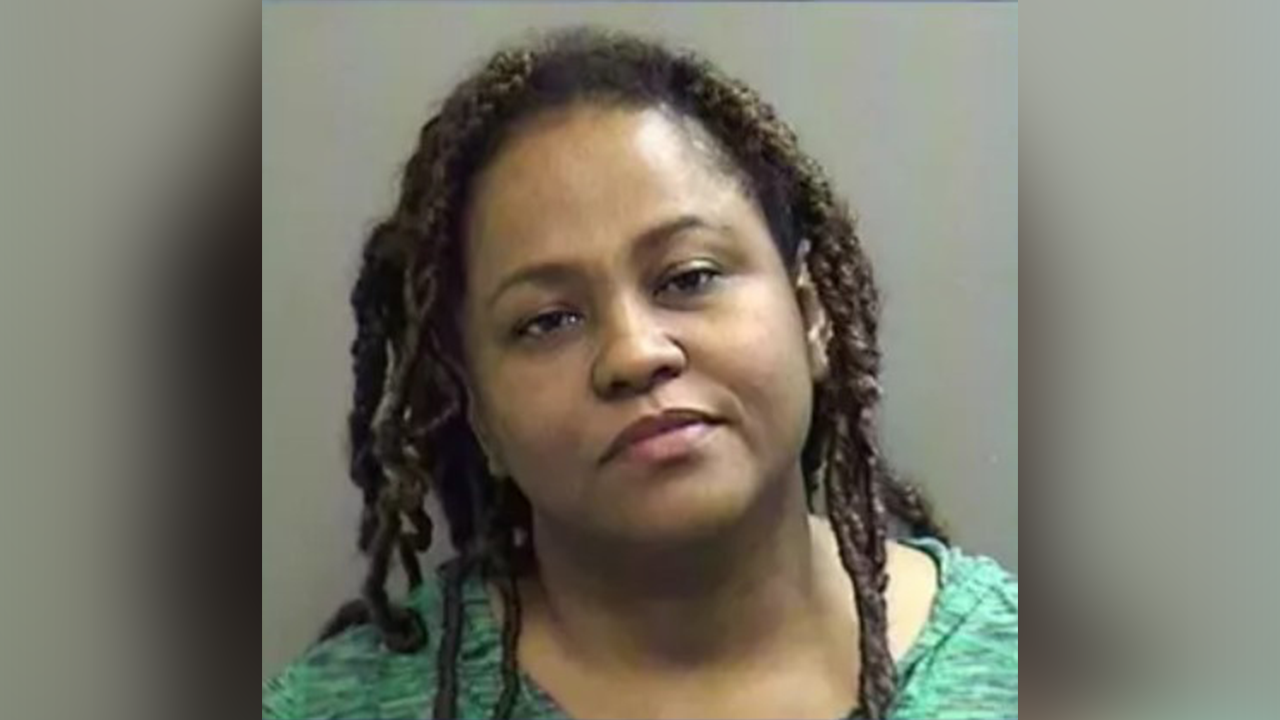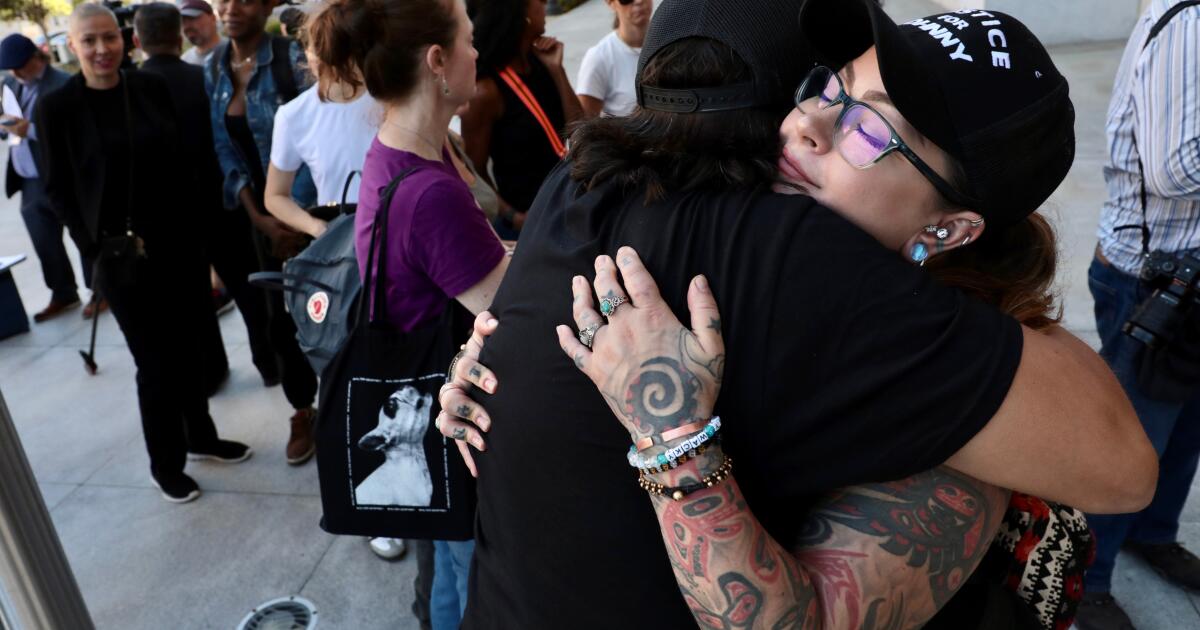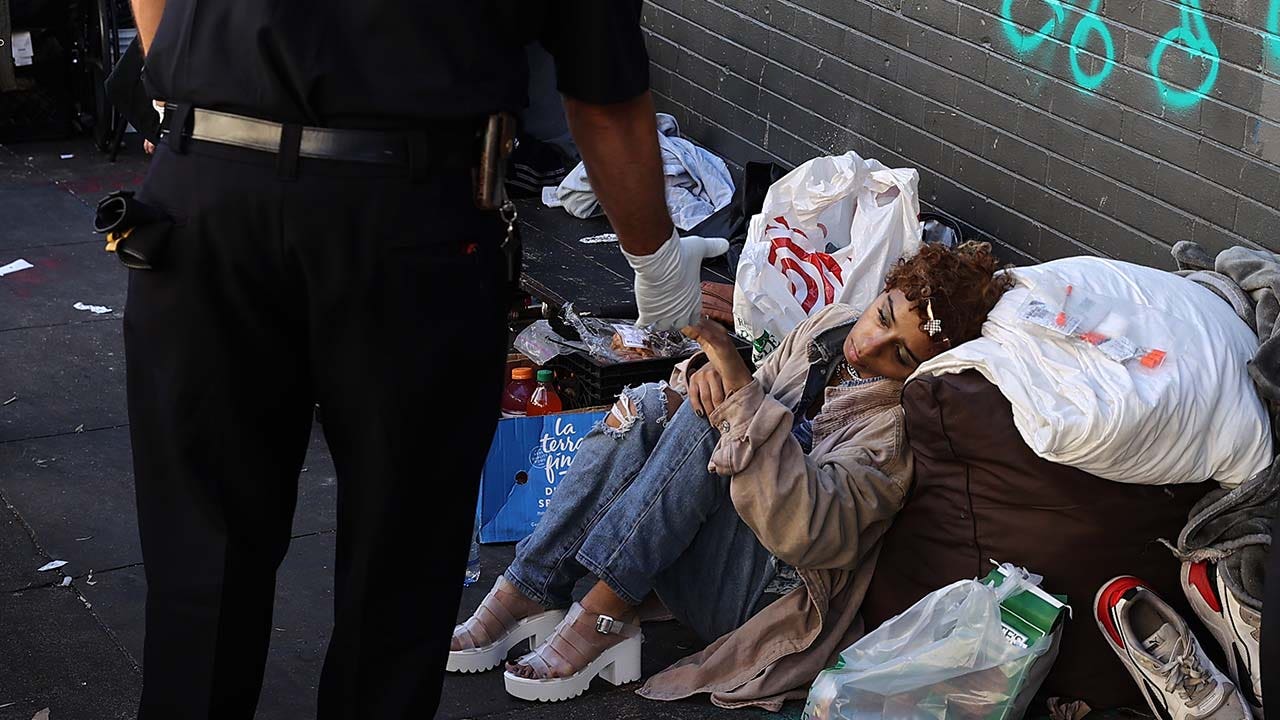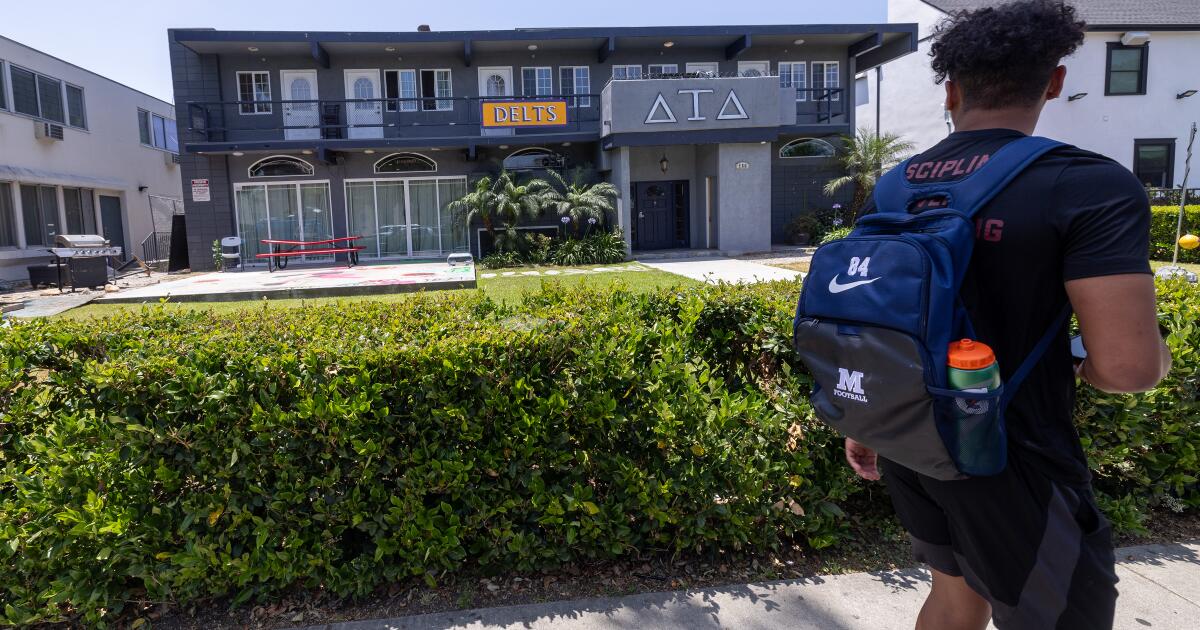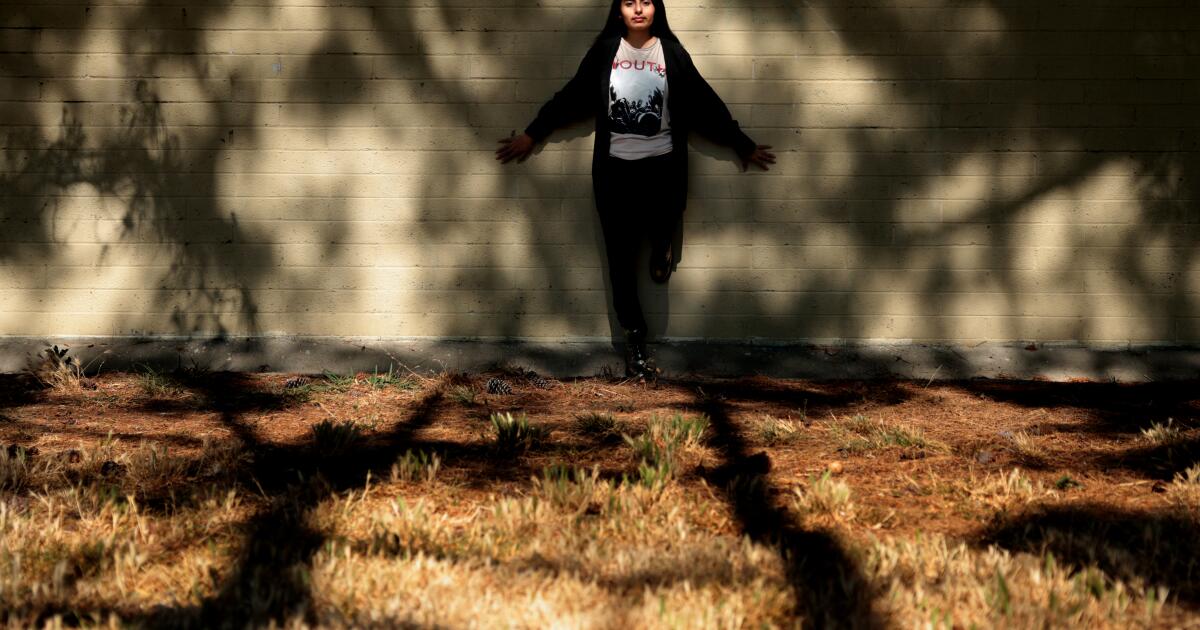Jenna Gibson was only 39 years old when she was training for a marathon five years ago, but her plans were interrupted by a knock that almost took his life.
Nearly 60% of stroke deaths occur in women, according to a recent Mayo Clinic study (and now Gibson, a Michigan mother of twoaims to help others become more aware and prioritize their health.
“Once I learned that strokes happen to younger people, I had to share my story,” she told Fox News Digital.
5 WOMEN'S HEALTH TIPS TO PREVENT AND DETECT STROKE, ACCORDING TO CARDIOLOGISTS
“In most cases, strokes can be prevented if you know what to look for.”
On the day of the stroke, Gibson was feeling great.
Jenna Gibson was just 39 when she was training for a marathon five years ago, but her plans were cut short by a stroke that nearly took her life. (Jenna Gibson)
It was a beautiful day, she had given a presentation at work and was enjoying a walk outside with her mother after dinner.
“We were talking about how I was training for the Detroit Marathon for my 40th birthday, and suddenly, out of nowhere, I felt like I'd been hit with a ton of bricks,” he told Fox News Digital.
DOG ALERTS FAMILY, SAVES TEXAS TEENAGER FROM A STROKE DANGEROUS FOR HIS LIFE: 'KEEPING GUARD'
Gibson stopped walking and suddenly fell on the grass.
At first his mother thought he was joking. “She actually took a photo of me lying on the grass and said, 'Come on, get up, what are you doing?'”
“They could see there was a blockage on the left side of my brain and I was having a stroke.”
Her mother helped her up, but Gibson couldn't walk straight.
“I felt like I was drunk, something wasn't right,” she said.
Still, Gibson did not experience any of the typical symptoms of a stroke, such as facial drooping, severe headache or vision disturbances.
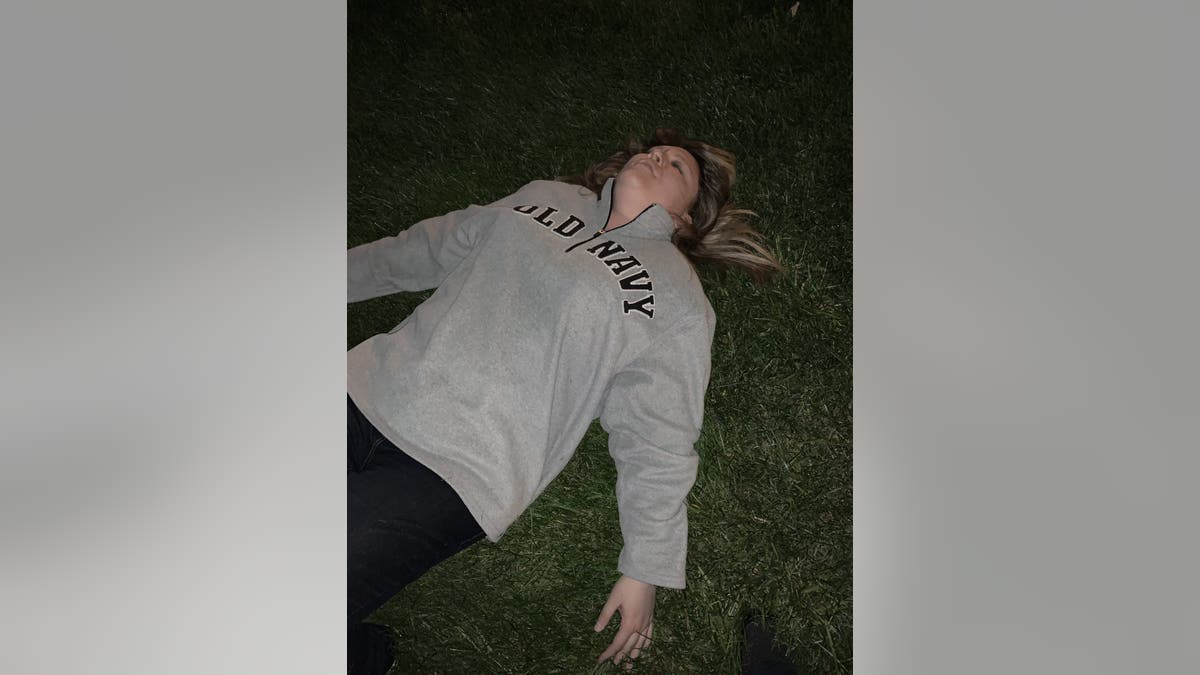
When Gibson fell to the grass for the first time, his mother thought he was joking and took this photo. As it turned out, Gibson was in the early stages of suffering a stroke. (Jenna Gibson)
They returned home, where Gibson assumed he was. have a migraine. She took some headache medicine and went to bed.
“A couple of hours later, I woke up and I still didn't feel good: I couldn't get out of bed, I couldn't move,” he recalled.
TIAS AND MINI STROKE RISKS: CARDIOLOGIST SHARES WARNING SIGNS AND PREVENTION TIPS
That's when they went to the emergency room. Gibson's mother told the medical team that her daughter was having trouble walking and that she might be having a stroke.
“They checked me out, they did all the tests and they didn't see the typical signs they would be looking for,” Gibson said. “Partly it was because he was young.”
“He could walk, but not very well. He could say some words.”
And he added: “His face was not droopy. He could walk, although not very well. He could pronounce some words.”
After a CT scan, the medical team decided that Gibson was likely suffering from an optical migraine. The next morning, when he still wasn't feeling well, the neurologist ordered another contrast scan and that time, the stroke finally appeared.
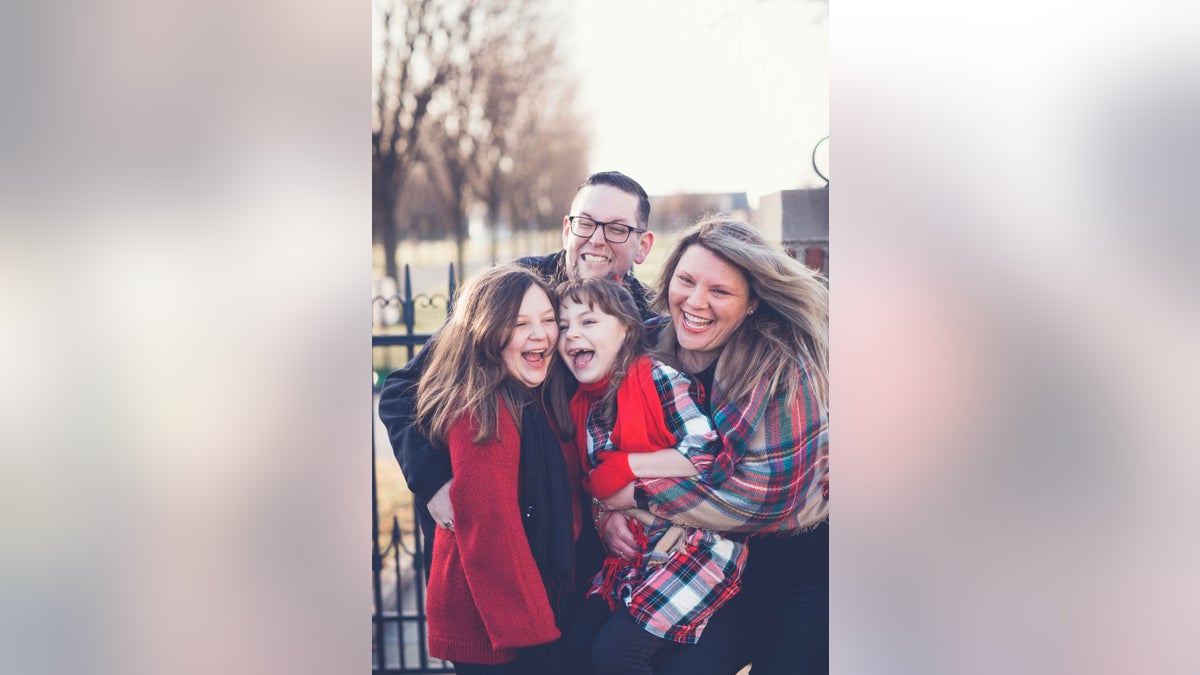
Gibson is pictured with her husband and two daughters, who were 8 and 4 years old at the time of her stroke in 2019. (Jenna Gibson)
“They could see that there was a blockage on the left side of my brain and that I was actively having a stroke,” he said.
Gibson was immediately airlifted to another hospital, where she had been emergency brain surgery to remove the blood clot.
“There was obviously a risk of death; if we don't act quickly enough, the deadline would be over,” he said.
HIGH BLOOD PRESSURE IS A WORLDWIDE CONCERN, LEADING TO DEATH, STROKE AND HEART ATTACK: HOW TO STOP A 'SILENT KILLER'
When she was flown to the hospital, Gibson said she was sure she was going to die and would never see her husband or daughters, who were only 8 and 4 at the time, again.
“I thought I would never see my children grow up and get married, or that I would have to live in some kind of vegetative state and never work again.”
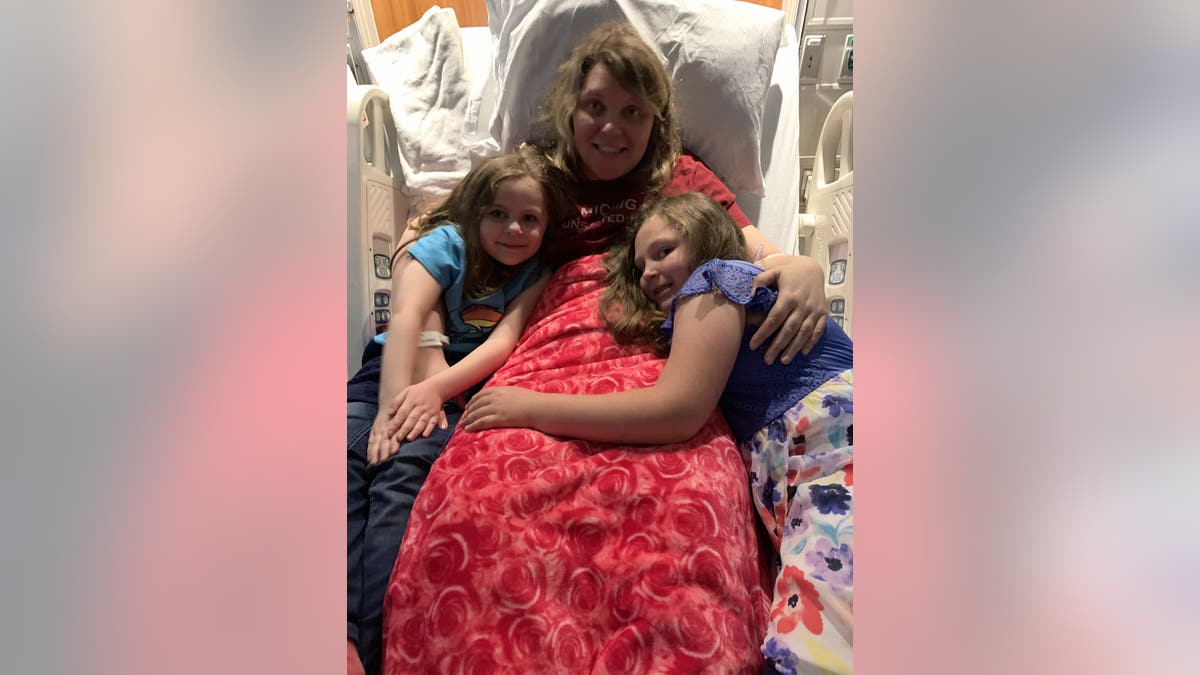
Gibson is pictured with his two daughters in the hospital after his stroke. Her first “homework” was to tell her daughters that she loved them and that “Mom is going to be okay.” (Jenna Gibson)
“I was thinking, 'Have I told my daughters enough times that Mom loves them? Does my husband know how proud I am of him?'”
The next thing he knew, Gibson was waking up from surgery in the ICU and facing a long road to recovery.
“At first, I couldn't talk at all. I couldn't move my right side. I was stuck in my head; I could see what was happening and hear people asking me questions, but I couldn't answer.”
'By the grace of God'
Over the next few days, Gibson said his abilities slowly began to recover.
He received speech therapy, occupational therapy and physical therapy — and over time he began to regain movement on his right side.
REPORTS REVEAL THAT RISK OF STROKE IS INCREASING IN YOUNG ADULTS
His first “task” was to tell his daughters that he loved them and that “Mom is going to be okay.”
After a couple of weeks, Gibson returned home and continued outpatient therapy for three hours a day, three days a week for a period of four months.
“It was during the first six weeks that we saw the most rapid improvement, and then it got slower and slower,” he said.
“I had to relearn everything. And now, by the grace of God, I can do all things.”
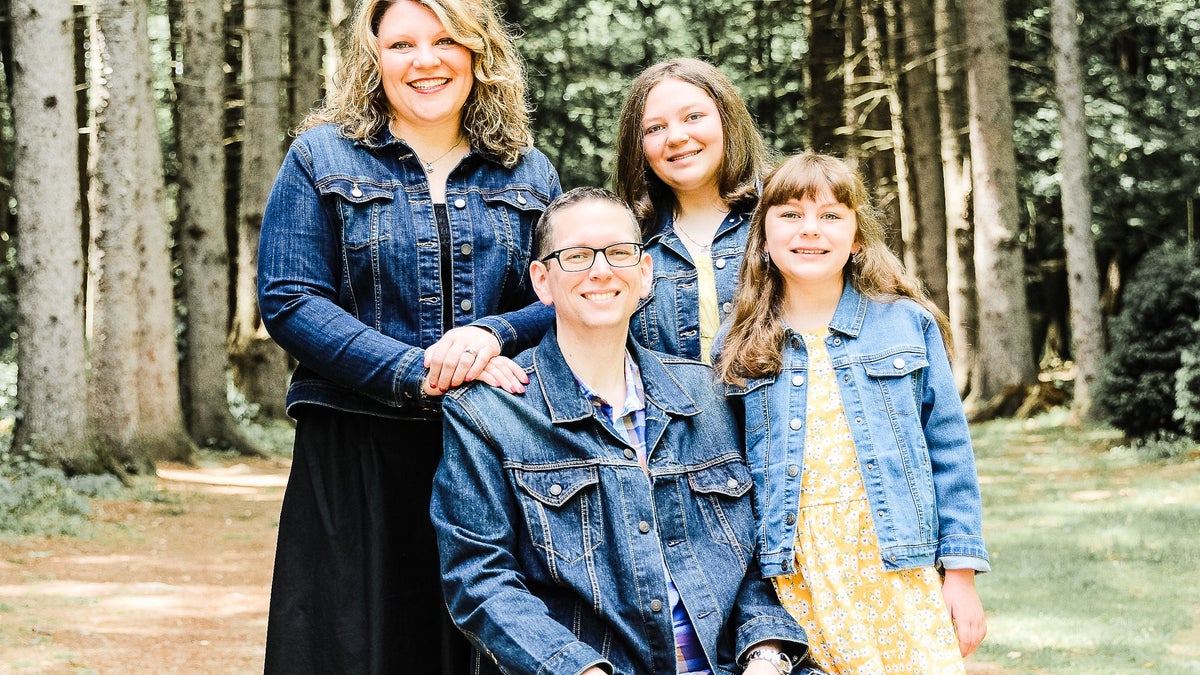
“I was thinking, 'Have I told my daughters enough times that Mom loves them? Does my husband know how proud I am of him?'” Gibson said of her stroke. Here she appears in the photo of her with her husband and her two daughters. (Jenna Gibson)
Today, Gibson is still completely numb on the entire right side of her body. She also sometimes has a hard time finding the right words while she talks, she said, especially when she is tired or stressed.
“But if you saw me, I look like a normal person,” he said.
And in a moment of coming full circle, Gibson was finally able to complete the half marathon last October.
'Every second counts'
Dr. Annie Tsui, chief of neurology at Access TeleCare, who is based in texasemphasized the prevalence of strokes among women and urged raising awareness.
“Strokes can occur for various reasons in different age groups and genders,” Tsui, who was not involved in Gibson's care, told Fox News Digital. “Although strokes can occur at any age, women between 20 and 39 years old have twice the risk of men.”
Although the main risk factors for stroke are hypertensionHigh cholesterol, heart disease, obesity and diabetes, the causes of strokes in younger age groups differ from those typically associated with older people, Tsui noted.

After her stroke was diagnosed, Gibson was flown to another hospital to undergo emergency brain surgery. (Jenna Gibson)
These may include heart problems, blood clotting disorders, genetic predispositions, vascular abnormalities, or trauma.
“Although no one is completely immune to the risk of stroke, people at higher risk should work with their doctor to develop a prevention plan,” Tsui said. “In general, maintain a healthy life style “It is crucial as up to 80% of strokes can be prevented.”
CLICK HERE TO SUBSCRIBE TO OUR HEALTH NEWSLETTER
According to Tsui, it is essential to be aware of the symptoms to receive treatment as quickly as possible.
She recommends using the acronym FAST, shown below, as a convenient tool for identifying indicators of stroke.
- Face (drooping or numbness)
- Arm (weakness or numbness)
- Speech (slurred or slurred speech)
- T for time to call 911

Gibson underwent four months of intensive physical and occupational therapy during his recovery. (Jenna Gibson)
“The chances of survival and positive outcomes are greater when the patient receives immediate care. medical attention“Tsui told Fox News Digital.
Some stroke treatments are only effective if given within three hours of the onset of symptoms, he warned, and the risk of permanent brain damage or death increases with each passing minute.
CLICK HERE TO GET THE FOX NEWS APP
“It is important to be vigilant when recognizing stroke symptoms and look for medical assistance immediately at the first sign,” Tsui said.
“Every second counts in reducing the risk of brain injury, permanent disability or even death.”
For more health articles, visit www.foxnews.com/health.

